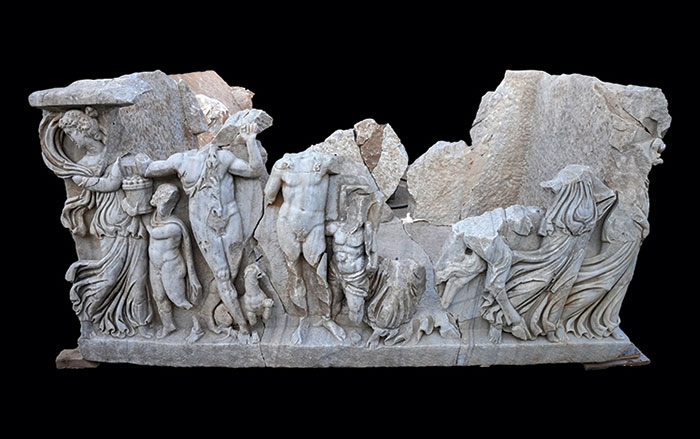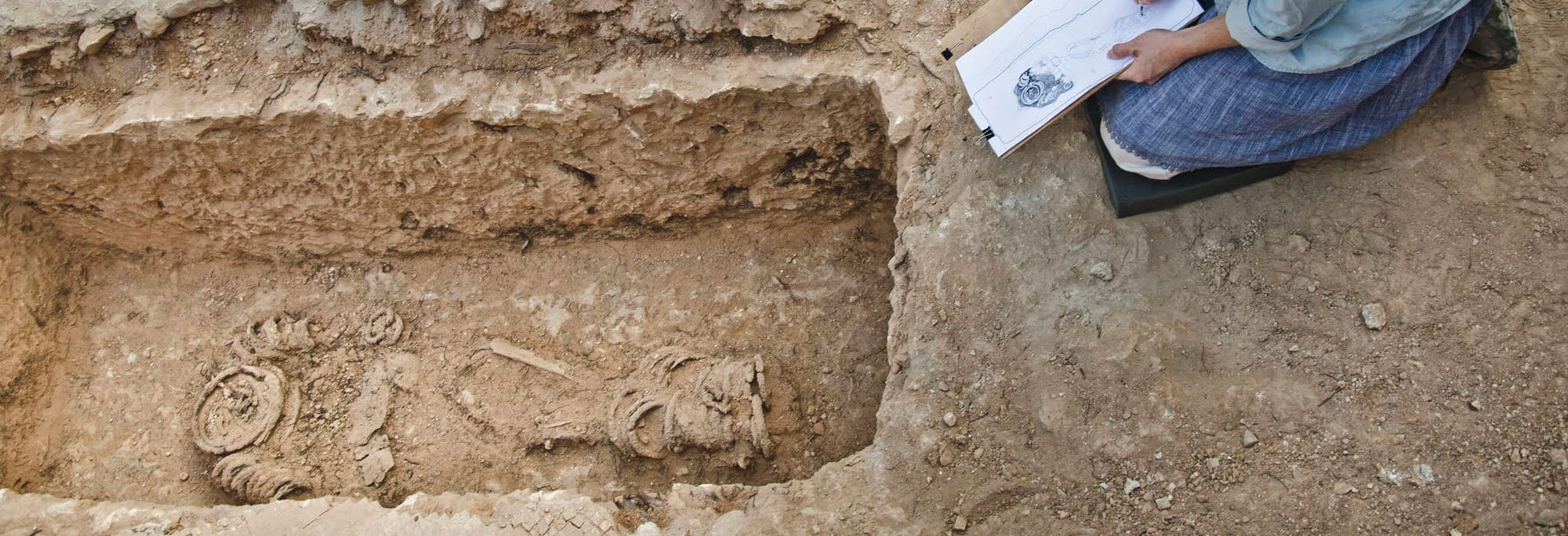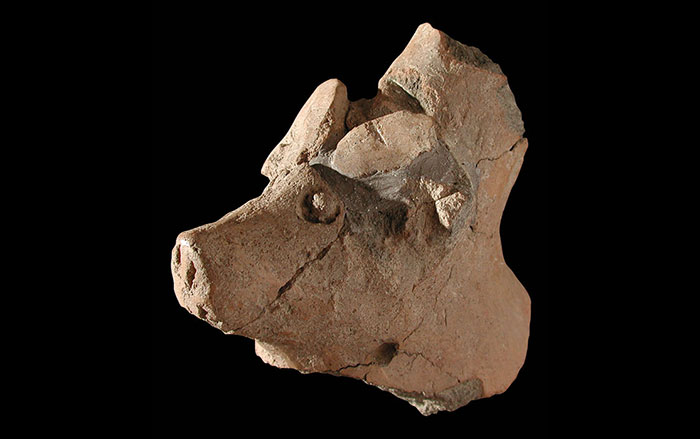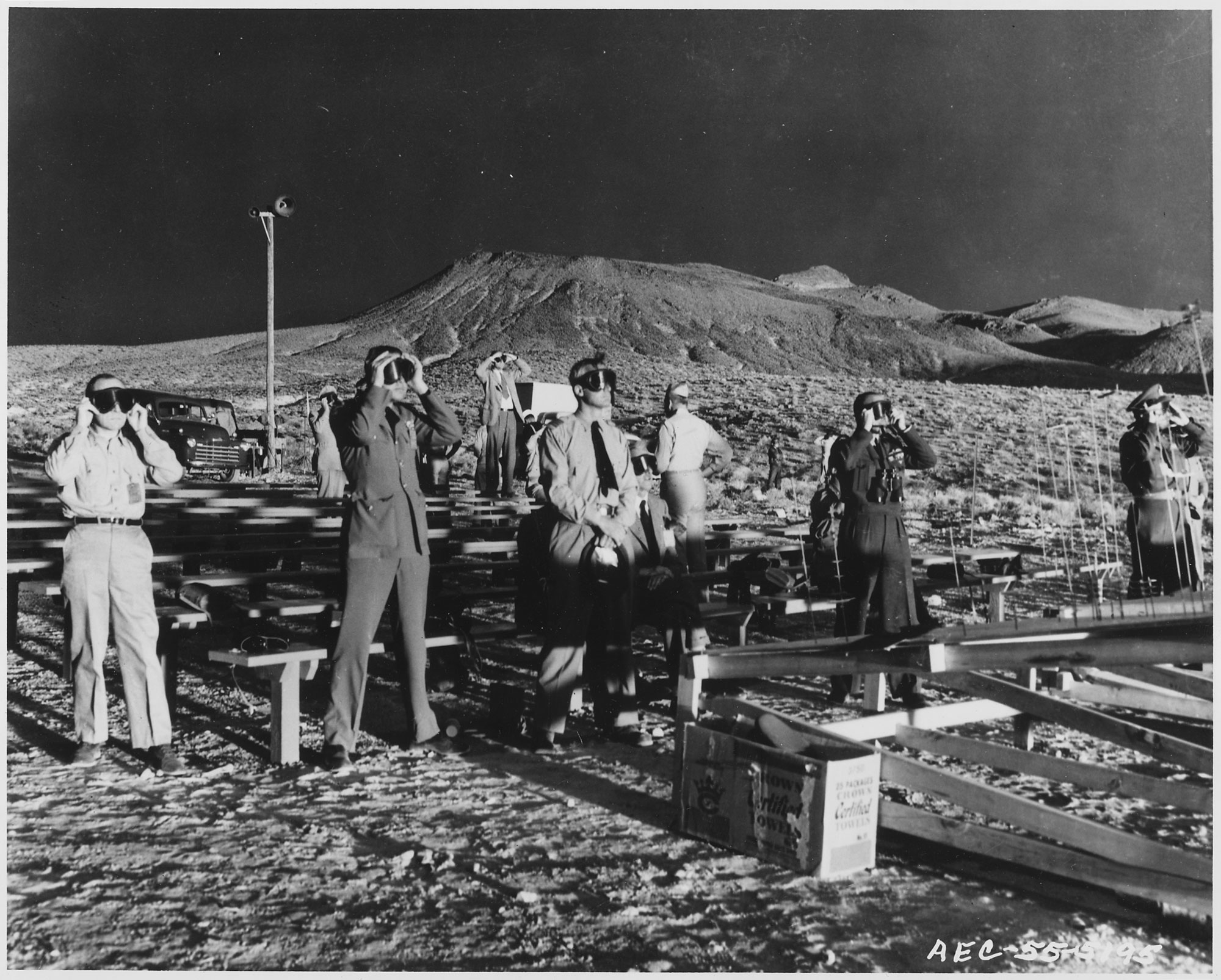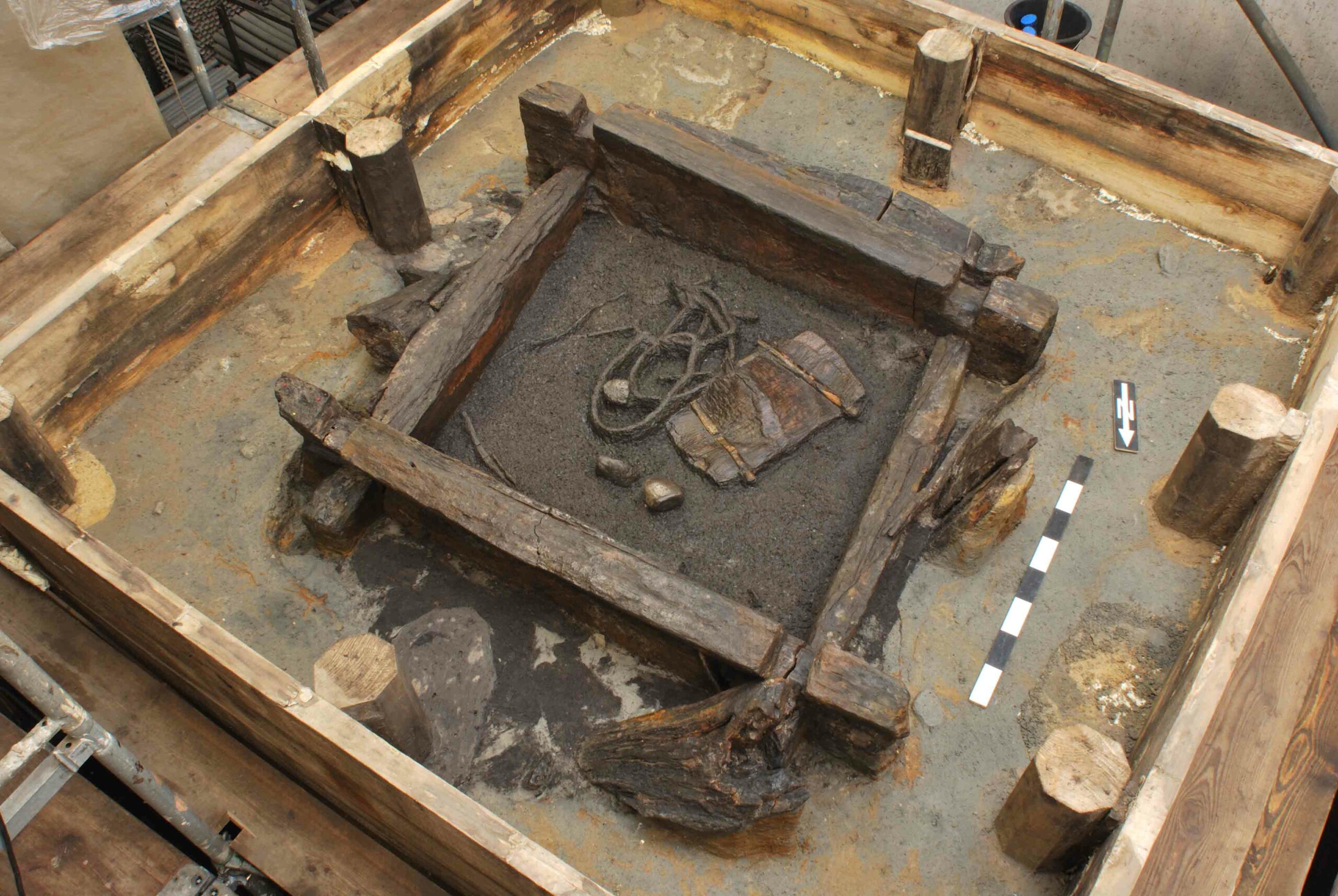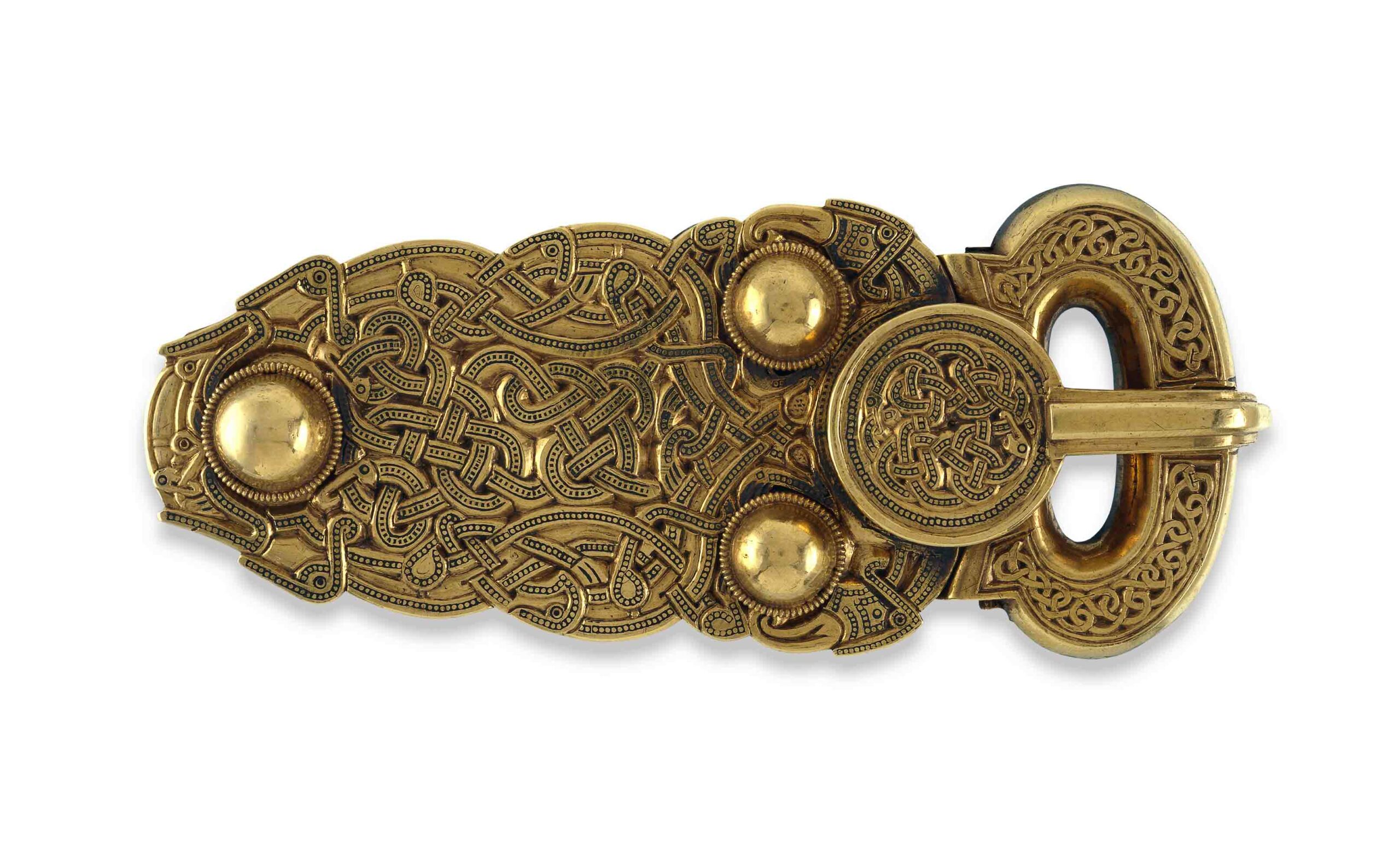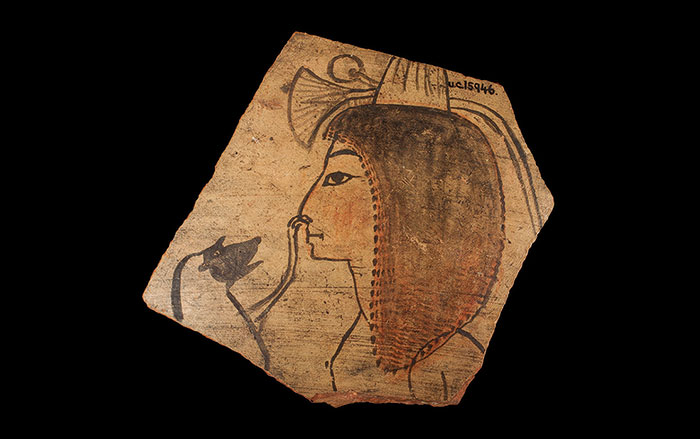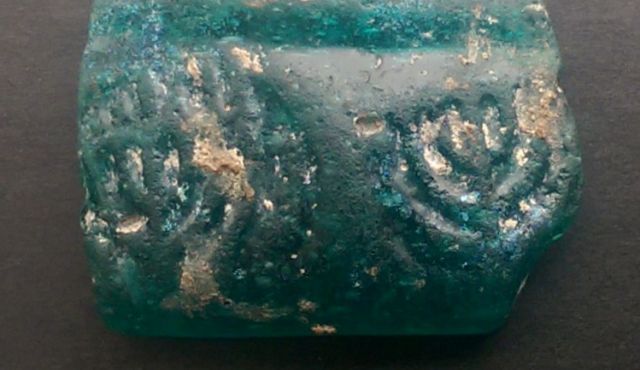
MOUNT CARMEL NATIONAL PARK, ISRAEL—A refuse pit in an industrial area dating to the late Roman and early Byzantine periods has yielded a fragment of a glass bracelet. “Stamped impressions of two menorahs survived on the small fragment that was found—one a plain seven-branched menorah, of which only the surface of the menorah is visible and the other one consisting of a seven-branched menorah with flames depicted above its branches,” excavation co-directors Limor Talmi and Dan Kirzne for the Israel Antiquities Authority told The Jerusalem Post. Glass bracelets are usually found in the region as funerary offerings. This bracelet may indicate that Jews lived in the settlement, or that the bracelet had been made in a local workshop for export. “The refuse that was discovered in the pit included numerous glass vessels and fragments of glass window panes, as well as a selection of jewelry, indicative of a population that lived a life of comfort and affluence,” they said. To read about other depictions of menorahs found in Israel, see "First Century Focus."


